- News
- Reviews
- Bikes
- Accessories
- Accessories - misc
- Computer mounts
- Bags
- Bar ends
- Bike bags & cases
- Bottle cages
- Bottles
- Cameras
- Car racks
- Child seats
- Computers
- Glasses
- GPS units
- Helmets
- Lights - front
- Lights - rear
- Lights - sets
- Locks
- Mirrors
- Mudguards
- Racks
- Pumps & CO2 inflators
- Puncture kits
- Reflectives
- Smart watches
- Stands and racks
- Trailers
- Clothing
- Components
- Bar tape & grips
- Bottom brackets
- Brake & gear cables
- Brake & STI levers
- Brake pads & spares
- Brakes
- Cassettes & freewheels
- Chains
- Chainsets & chainrings
- Derailleurs - front
- Derailleurs - rear
- Forks
- Gear levers & shifters
- Groupsets
- Handlebars & extensions
- Headsets
- Hubs
- Inner tubes
- Pedals
- Quick releases & skewers
- Saddles
- Seatposts
- Stems
- Wheels
- Tyres
- Health, fitness and nutrition
- Tools and workshop
- Miscellaneous
- Cross country mountain bikes
- Tubeless valves
- Buyers Guides
- Features
- Forum
- Recommends
- Podcast
review
£329.99
VERDICT:
Stiff and reliable tubeless-ready training and racing wheels; not flash, but perform very well
Weight:
1,640g
Contact:
At road.cc every product is thoroughly tested for as long as it takes to get a proper insight into how well it works. Our reviewers are experienced cyclists that we trust to be objective. While we strive to ensure that opinions expressed are backed up by facts, reviews are by their nature an informed opinion, not a definitive verdict. We don't intentionally try to break anything (except locks) but we do try to look for weak points in any design. The overall score is not just an average of the other scores: it reflects both a product's function and value – with value determined by how a product compares with items of similar spec, quality, and price.
What the road.cc scores meanGood scores are more common than bad, because fortunately good products are more common than bad.
- Exceptional
- Excellent
- Very Good
- Good
- Quite good
- Average
- Not so good
- Poor
- Bad
- Appalling
Shimano's Ultegra-level WH-6800s are good all-round wheels for training and racing. They're strong, and tubeless-ready.
Given the jump to 11-speed for Ultegra, and the associated change in freehub design, Shimano had to produce a new pair of Ultegra-level wheels and the WH-6800s are the result. They have an all-alloy construction with 16 bladed spokes at the front and 20 at the back; they're radially laced on the front wheel and straight pull with a two-cross pattern to the rear.
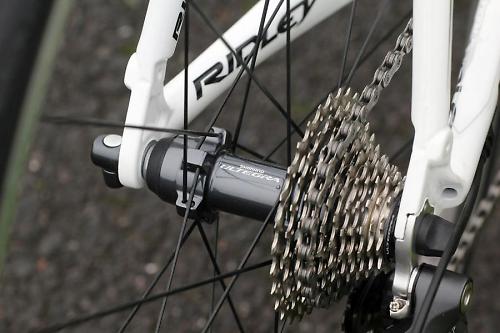
| You can find Shimano WH-6800 Ultegra wheels online at Wiggle (who will also price match other deals you can find) or if you prefer to support your local bike shop you can find a Shimano dealer here. |
The hubs feature Shimano's angular contact bearings, labyrinth seals and tool-free bearing adjustment, and they have a wide-flange design to improve stiffness. As susual, Shimano use a steel freehub body for durability rather than saving weight with an alloy one. The rims are tubeless-ready (you get valves with the wheels), with no drilling for the spokes in the rim bed, and the rear rim is asymmetric to even out the spoke forces a bit. The braking surfaces are machined for more progressive stopping. The WH-6800s arrived true, and stayed that way throughout testing.
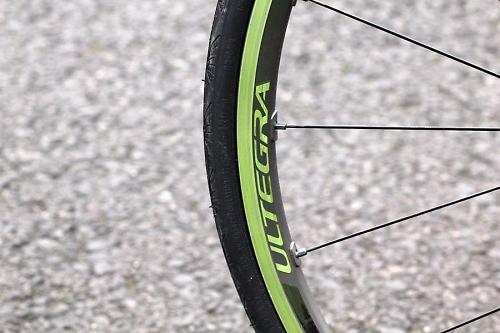
Before you get them on the bike, the first thing that you notice is the lack of spoke holes in the rim bed, which should make sealing a tubeless tyre a whole lot easier – as there's no faffing about with rim tape – and replacing a spoke a good deal harder. The second thing you notice is that the well of the rim is quite narrow compared to a standard rim design. Most of the time that's not a problem but I found fitting a tight tyre – where you have to push the bead down into the well of the rim to get the tyre on – was more difficult than normal because of the lack of space.
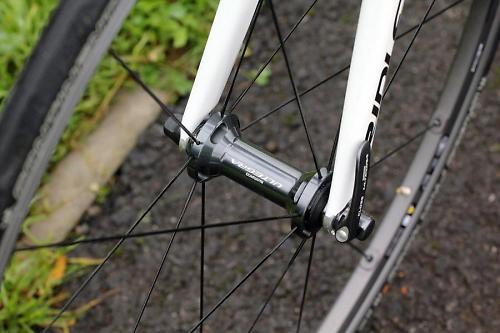
Once tyres were fitted and the wheels fitted to the bike, the WH-6800s were very well behaved. I've found other wheelsets with a non-drilled rim bed to be laterally stiff, and these Shimano wheels are certainly that. There's very little deflection at the brake blocks when you lean the bike into a corner or put some watts through the pedals; it was very rare that I managed to eke any brake rub out of them. When you do want the brakes to make contact, slowing yourself down is a predictable business in all conditions.
The freehub is a fairly standard Shimano unit. That means it's steel, so there's no danger of your cassette cutting into it. It's fairly quiet, too, and the rotation to engagement is a bit more than you find with some other wheel brands. It might be a minor disadvantage in a race, but other than that it's unlikely to make any difference.
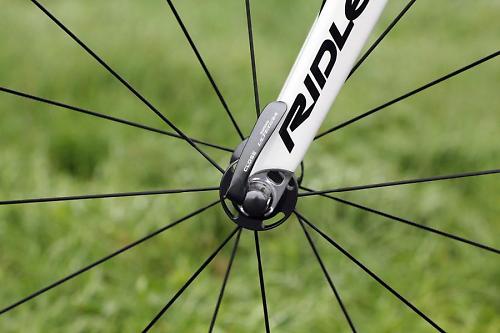
I didn't have any issues with the wheels going out of true, in spite of the fact that I lent them to Liam Glen to crash in the mountains. That episode did manage to put a bit of play into the front bearings, though. If you loosen off the axle with a 5mm allen key in each end, you can tweak the cone position by hand which is a simple enough job.
Overall the WH-6800s put in a good performance. They're not the lightest you can buy for the money but they're well built and stiff, and good for anything up to a race. At the recommended retail price of £329 they'd be a very decent upgrade to the stock wheels on a mid-level road bike. If you shop around you can get them for a fair bit less than that though, which makes them a good buy.
Verdict
Stiff and reliable tubeless-ready training and racing wheels. Not flash, but perform very well.
road.cc test report
Make and model: Shimano WH-6800 Ultegra wheelset
Size tested: n/a
Tell us what the product is for, and who it's aimed at. What do the manufacturers say about it? How does that compare to your own feelings about it?
Ultegra wheels offer proven technology based on the top of the range Dura-Ace models
UST Tubeless and tubed tyre compatible rim
Built with 20 rear and 16 front stainless steel bladed and butted spokes
The wheels uses a special wide flange hub design and an asymmetrical rim that results in additional stiffness and stability
Labyrinth and contact sealing - low-friction seals effectively shut out water, mud and dirt without affecting rotational smoothness
Quick and easyto maintain digital click bearing adjustment
The Hub uses angular contact bearings designed to cradle the balls giving both radial and lateral support for superior strength and durability in real world riding conditions. They also offer precision bearing adjustment and easy maintenance
Super polished ball races for high precision, durability, and smooth rotation
8,9, 10 and 11-speed compatible
700C Clincher rim only
Weight: 1640 grams a pair
Rate the product for quality of construction:
9/10
Rate the product for performance:
8/10
Rate the product for durability:
8/10
Rate the product for weight, if applicable:
7/10
Rate the product for comfort, if applicable:
7/10
Rate the product for value:
8/10
Tell us what you particularly liked about the product
Stiff, stayed true.
Tell us what you particularly disliked about the product
Rim well is narrow which makes fitting tight tyres harder
Did you enjoy using the product? Yes.
Would you consider buying the product? Yes.
Would you recommend the product to a friend? Yes.
About the tester
Age: 41 Height: 190cm Weight: 102kg
I usually ride: whatever I'm testing... My best bike is: Genesis Equilibrium 853
I've been riding for: 10-20 years I ride: Every day I would class myself as: Experienced
I regularly do the following types of riding: commuting, club rides, sportives, general fitness riding, fixed/singlespeed, mtb, Mountain Bike Bog Snorkelling, track
Dave is a founding father of road.cc, having previously worked on Cycling Plus and What Mountain Bike magazines back in the day. He also writes about e-bikes for our sister publication ebiketips. He's won three mountain bike bog snorkelling World Championships, and races at the back of the third cats.
Latest Comments
- Rendel Harris 2 sec ago
The way he's been going recently he'll probably be demanding we sell him Maidenhead soon to give US shipping a port on the Thames.
- Velophaart_95 55 min 57 sec ago
The UCI sell their Worlds as a package; so the BBC can show Road, Track, MTB, Cyclocross, etc ...
- eburtthebike 3 hours 6 min ago
I well remember the BBC rolling out their environment correspondent to criticise LTNs.
- IanGlasgow 3 hours 56 min ago
Agreed. I won't consider any product that doesn't use USB-C anymore. I usually have a USB-C cable and a battery bank in my toolkit which will...
- David9694 3 hours 53 min ago
Pensioner left with £1,300 vet bill after cyclist ran over dog in Swalecliffe, near Whitstable, and fled...
- Terry Hutt 9 hours 17 min ago
Those models aren't miserable etc. They're hungry.
- Bungle_52 16 hours 24 min ago
This was a failure to give way at a roundabout so although it was relatively straightforward to anticipate and avoid there is traffic law to...
- wtjs 17 hours 44 min ago
she questioned what Police Scotland is doing to "deter dangerous driving and protect cyclists"...
- wtjs 17 hours 53 min ago
I've got a few reports coming up to one year where I've been told that they will take action but I don't know what action yet. I'll let you know...





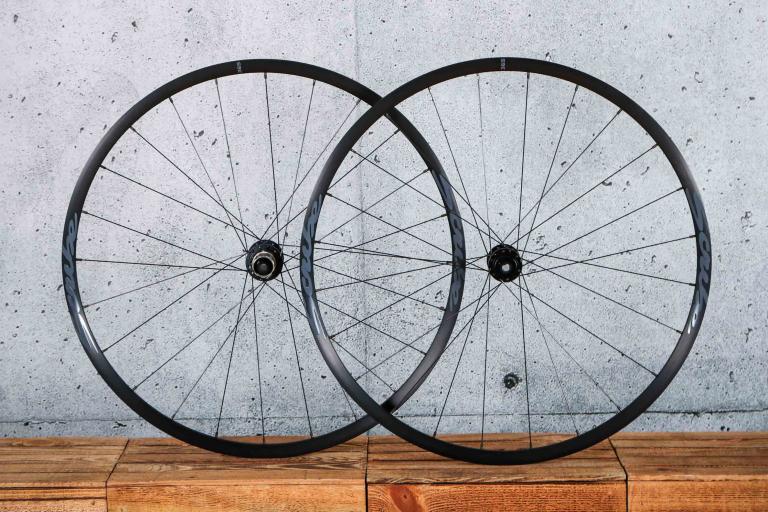
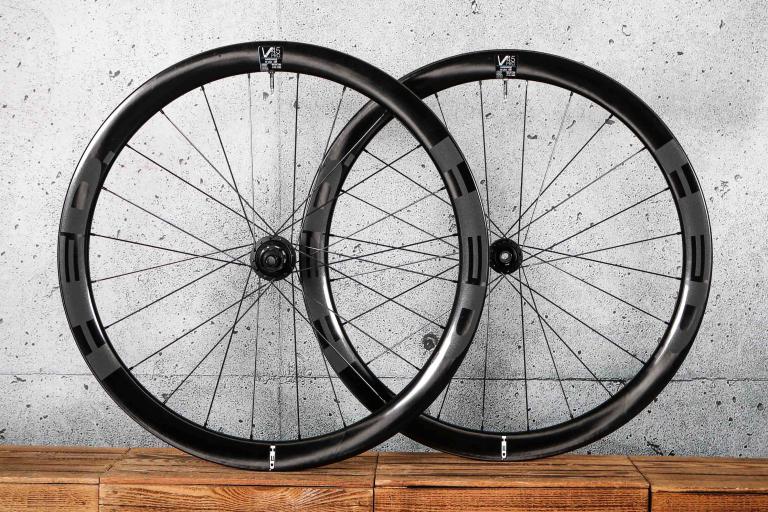
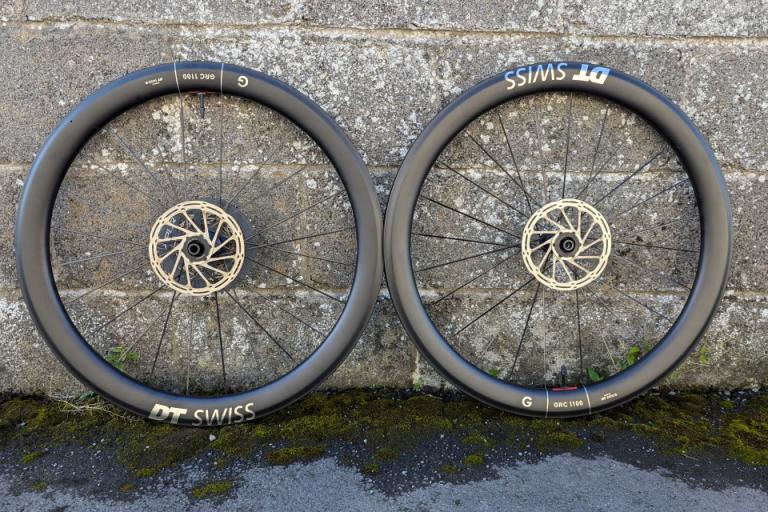
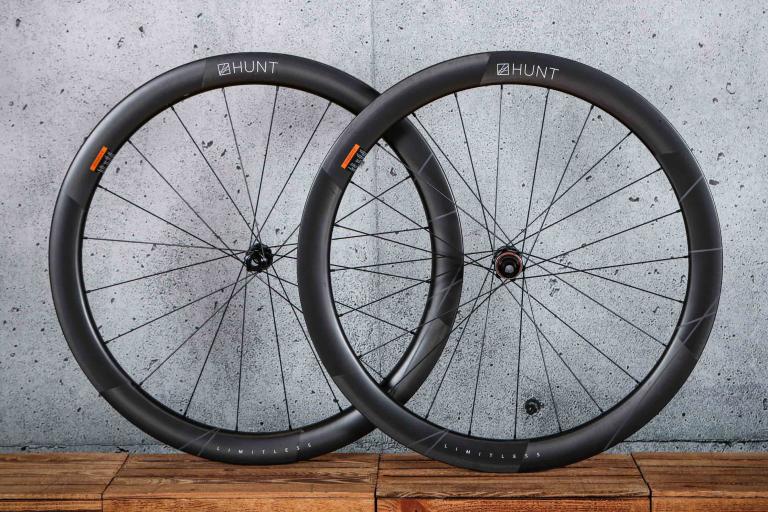
Add new comment
31 comments
In some of the photos the wheels are green accented - was this ever an option available to customers or jsut for the review purposes? Anything I can find online is black/silver.
Generally found Shimano hubs to be 'heavy' but awesome in a 'set and forget' kinda way. I have totally ignored shimano hubs for many thousands of k and not been punished. I am not a fan of their straight pull hubs as I had an early set that fell apart (hubs fine, spokes kept breaking) but I suspect that they have sorted that out by now.
Personally I would stump up another £80 for 369 and get the carbon laminate versions. Yum.
As a bike mechanic I regularly see cup and cone wheels (normally rear) with ruined races because the cup and cone has worked loose, the rider has ignored it for 100's km and ruined the hub.
If looked at from time to time they should last years, the main argument put to me from shimano techs is that their years of testing found a quality cup and cone assembley has lower rolling resistance than cart bearings, and that is why they continue to use it in their wheels
I've got cup and cone wheels and cart bearings wheels on different bikes, had many different brands over the years and generally found quality cup and cone to outlast cart bearings, the short service life on some of the fancy wheels using small cart bearings to save weight is shocking, especially roval.
Must say i've also owned numbers of wheels with Hope hubs MTB and road and have not found the bearing life to be particularly good?
Curiously positive reviews for stuff on here seems to often coincide with me receiving a promotional email from Ribble/Merlin etc.
there seem to be quite a lot of people on here who think you need to spend long hours carefully tending to the bearings in these wheels. I had them for at least six months and put a thousand-odd miles into them, and the seals are excellent. Aside from tweaking the front wheel when Liam stacked it in the Pyrenees, they needed no input from me whatever. I ran a pair of RS80s into the ground over the course of about four years and the bearings were fine even when the rims were worn through.
Mostly from people who admit to getting a shop to service their equipment anyway, bizarrely.
Really ? Who ?
I love cup & cone bearings - the sense of satisfaction after spending 10 minutes re-greasing and adjusting them to perfection before spinning the wheel between my hands really takes some beating, one of my favourite maintenance jobs. I haven't tried the tool free version of the hubs (as with these wheels) yet, but I'm sure they are just as much fun
That's cool, although Hope hubs aren't exactly cheap, so you may not be comparing like with like.
For example, a pair of Hope Mono hubs are around £200 on Wiggle, whereas the Ultegra wheelset are £230 (but out of stock).
I would imagine that, for the use that the Ultegra wheels are likely to get, they will never require greasing. As suggested above, the rims will have probably worn out before the bearings get notchy, and the seals are pretty good on Shimano hubs.
The longevity argument is more relevant for handbuilts I guess.
I do wonder why people have a problem servicing hubs though. I think the Ultegra hub has tool free adjustment, so you don't even need cone spanners. Knocking out cartridge bearings with a screwdriver etc. as I regularly hear about on forums, sounds harder work and more risky.
Regreasing a wheel is about as time consuming as re-taping your handlebars.
My Hope hubs have done well over 20000 miles of on and off road riding including crossing streams, flooded roads etc... The bearings are slightly rough but still spin ok without any play. During all this time I've never cleaned or serviced them and that is their main advantage. If you ride a lot (e.g. commuting) you can just forget about the hubs and neglect them without the risk of ruining them completely (pitted bearing races).
Cup and cones are for people who love spending time cleaning, adjusting and servicing.
re; bearing choice: It seems like a bit of a moot point with these wheels. If one of your criteria is longevity and serviceability then you probably wouldn't choose a set with proprietary rims, spokes, nipples and hubs like this anyway. Once the rim has worn out they are most likely to be binned, I'd be surprised if they can be rebuilt with a new rim / spokes cost effectively.
Surely its quicker to maintain a set of cup and cone then it is to swap out cartridge bearings?
And for me less stressful... nothing grates me more than ruining a set of cartridge bearings on installation... which lets be honest, is pretty easily done without the right tools.
Pros and cons to both bearing types, it's good we still have a choice.
So far I’ve been using these for about 6 months and they have performed admirably. I use them with Hutchinson Fusion 3 tubeless 23mm tyres and so far both the wheels and the tyres have been excellent.
I suppose I am getting to be an old git, so fettling bearings comes naturally to me. It really is a very easy job and it appeals more than just chucking away bearings.
Although the labyrinth seals seem to work so well the grease rarely seems to get contaminated on the Shimano wheels and hubs I have, so they end up being pretty much maintenance free.
I believe cup and ones are supposed to spin better, but to be honest, I've never had any wheels that weren't cup and cone!
I like the cup and cone set up found on Shimano hubs.
More to the point, as mentioned, I dislike the cartridge bearings used by far too many manufacturers out there.
I've had far too many cartridge bearing wheels that have had a little bit of nonadjustable play, or indeed the bearings fail within a foolishly short period.
Cup and cones seem to be more durable than many cartridge set ups (not all, the cartridge bearings in Royce hubs live forever for instance), but are easily maintained and tuned. You have to seriously neglect a cup and cone bearing to damage the bearing races.
On a performance level, something that cup and cone bearings certainly do better is go around corners. By that I mean they provide better feedback and consistency than a lot of cartridge bearing wheels.
I've had the reason for this explained to me by someone that genuinely knows why this is, but its all a bit complicated so I won't try and write it down.
However, the truth is, its the lack of bearing quality in most cartridge bearing set ups that allow cup and cones to continue to shine and have a place in the market.
This ^^. A decent set of cartridge bearings can last many thousands of miles - most don't design them in or fit them.
Campagnolo use cartridge bearing but only on their cheaper, low end hubs. The benefits from cup and cone are many, they last for ages if maintained properly which is easy for the home fettler to do with a couple of spanners, they're adjustable, and they've worked perfectly well for decades. If you don't like doing the maintenance work yourself then get hubs with cartridge bearings and pay someone to change then every couple of thousand km but if you do that it doesn't really matter what type of bearings you have - you'll never be opening them up anyway.
..but i'm not a home fettler - I want to spend as much time with the bike on the bike and I have enough going on with family and work to try and avoid tasks I shouldn't need to do. I do make a point of regularly cleaning and maintaining the drive chain, making sure brakes are up to scratch, cable clean and smooth and so on. However I really don't want also be arsing around with something that has an excellent alternative available that is cheap and easy to replace.
The majority of riders will, I suspect, also not be fettlers of any sort - which is absolutely fine as they should primarily be an opaque piece of transport. My bikes are transport and fun, and I like doing some stuff so i'm probably inbetween the two.
Campagnolo are somewhat different in that they have replaceable cups, which makes any damage due to maintenance failure easier to deal with.
As said before, shit cartridge bearings (of which there are many) will clap out in a couple of thousand miles or even less - decent ones can last many thousands... there is not much wrong with the technology as such. As for maintenance, i'll replace cartridge bearings myself but it does make sense (IMO) for 'bike as transport' users to have something that is less risky when ignored for long lengths of time - it's hard enough to get folk to look after their chains and brakes.
I don't have anything much against cup and cone per se, it's just that from a pragmatic point of view a decent set of enclosed bearings makes more sense to me.
What do other people think about Shimano's use of cup'n'cone for their entire range? Personally I really can't be bothered with having to maintain them, and any set I've had have inevitably got pitted over the winter as a result of my laziness. Cartridge bearings seem a lot better suited to a UK winter, no risk of permanent hub damage.
For the majority of riders, I don't see the benefit of cup'n'cone myself. Financially they might make some sense if everyone had the time and inclination to maintain them, but it's trivial amounts compared to almost anything else you care to mention about cycling. If they are not maintained then the financial argument pretty much goes out of the window.
Decent cartridge bearings are cheap and easy to source and changing them is simple and easy enough that, even if you don't want to do it yourself, paying to have it done for you won't break the bank. They are efficient and when they go wrong they are unlikely to take out a hub or require a reface. The main problem I have with them is more related to getting hub manufacturers to actually use a decent size bearing so the bloody things don't wear out every 1000 miles - it's not rocket science and some do manage to get it right, but there are too many out there that are stupidly and un-necessarily small (IMO).
That's always been my thoughts as well, Shimano is the only wheelset manufacturer I can think of that does't use cartridge bearings on any of its wheels, even at the high end of their range. I've never bothered with their wheels, other than the freebie sets with a new bike now and then, due to this. The few times I've actually serviced the hubs myself I found it to be one of the more messy bike maintenance jobs, with lots of little bearings to lose.
Yep, tried some slightly round wheels once and they gave me piles
Mine survived a hammering at the tour of Flanders sportive with no issues at all, and the bearings are still running well after a wet british winter.
I totally agree with the reviewers comments on the rims being tight to fit tyres though. I had a 28mm Vittoria open pave to fit for Flanders and had to abandon it in the end. Even if I had eventually got it fitted the thought of trying to do it again after a puncture on the side of the road made it a no-go.
Just bought a new bike with these wheels, they seem very good from my point of view and zip along very nicely. I'd recommend them
I'm very glad these are all-round wheels, they're by far the comfiest type.
That's why my climbing is poor, I keep saying it's those square wheels.
I have the Dura Ace version and as the reviewer says, they might not be flash (read "Exalith" for that), but they roll super smooth and are light for the price, this goes also for the Ultegras.
Does that weight include the skewers?
Pleased to see these getting a good review when I've just got myself a set (or rather bought a set for my wife to give me for my birthday ). They're not on the bike yet, but will be very soon. I got them for £230 on Wiggle, so if they're good value at £330, I'm very happy.
). They're not on the bike yet, but will be very soon. I got them for £230 on Wiggle, so if they're good value at £330, I'm very happy.
Pages